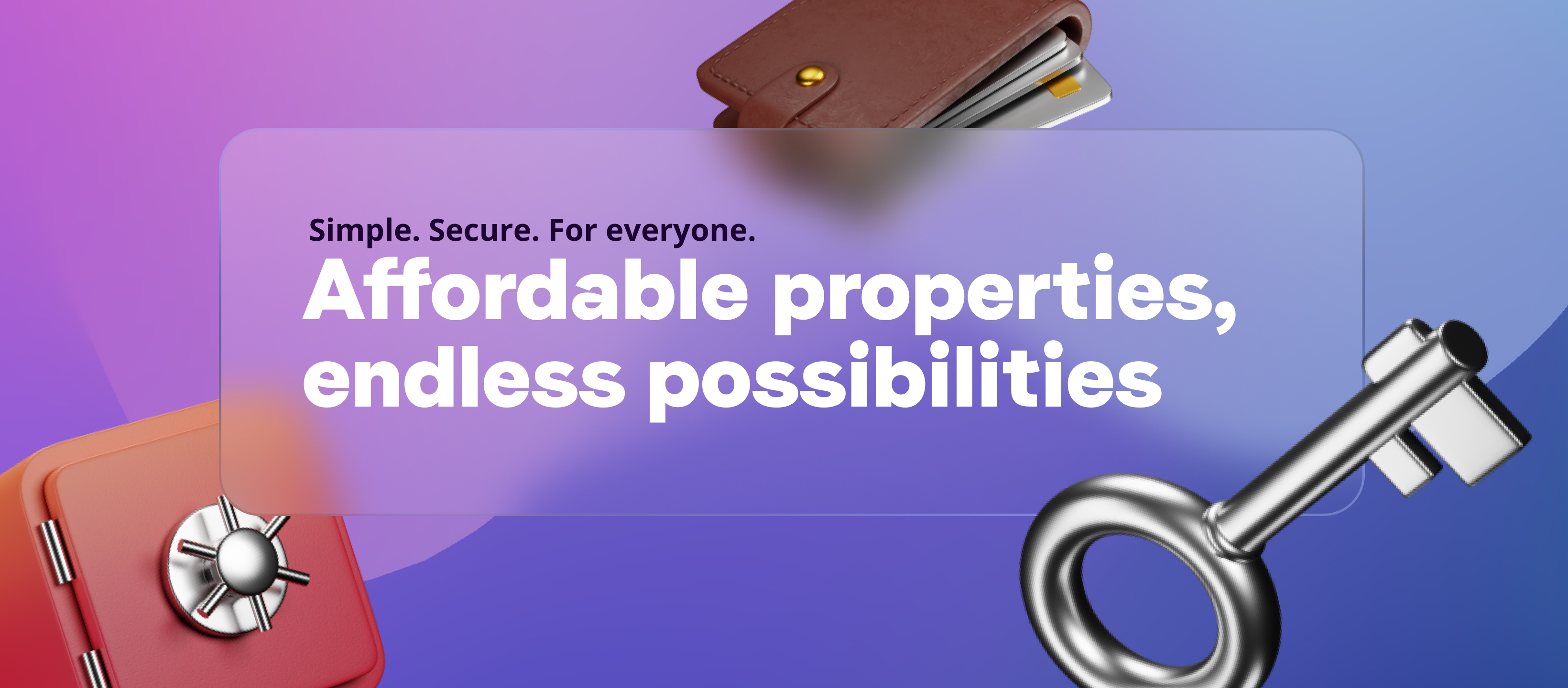What is Blockchain? – Definition and explanation
September 30, 2025
5 minutes read


Adrien VANDENBOSSCHE
Co-founder | President
🔍 Definition of Blockchain
In just a few years, blockchain has become one of the most influential technological innovations of the 21st century. Introduced with the launch of Bitcoin in 2009, it now extends far beyond cryptocurrencies. From banks to logistics companies, governments to artists, an increasing number of players use blockchain to secure, automate, and bring greater transparency to their transactions. But what exactly is hidden behind this frequently mentioned yet often misunderstood term? Before exploring decentralized finance, NFTs, or smart contracts, it is essential to first understand what blockchain is, how it works, and why it draws so much attention.
🔗 How a blockchain works
To understand blockchain technology, picture a digital ledger that is shared and continuously updated by every participant in the network. Its operation rests on three key elements: the blocks of data, the cryptographic chain that connects them, and the decentralized structure that ensures security.
1- Blocks
Data or transactions are first grouped into “blocks.” Each block contains several pieces of information: transaction details, a timestamp, and a unique cryptographic fingerprint called a hash. This hash acts like a digital signature that uniquely identifies the block and prevents tampering.
2- The chain
Once validated, each block is linked to the previous one through its hash. This cryptographic link forms a chronological sequence called the “blockchain,” literally a chain of blocks. Changing any information in a single block would require recalculating all subsequent blocks, an almost impossible task without detection, which ensures the integrity of the ledger.
3- Decentralization
Unlike a traditional database controlled by a single entity, a blockchain is maintained by a network of thousands of computers known as “nodes.” Each node keeps a complete copy of the ledger and takes part in validating new blocks. Because no central authority can alter or shut down the system, blockchain is highly resistant to censorship, fraud, and technical failures.
🛡️ Security mechanisms
Blockchain’s strength comes from a combination of technologies designed to protect data and prevent tampering. Its reliability is built on cryptography, transaction validation, and the immutability of stored information.
Every block added to the chain contains a unique hash generated from all its data. Even the slightest change produces a completely different hash, immediately exposing any attempt at manipulation. This cryptographic safeguard preserves the integrity of the ledger without the need for a trusted third party.
Before a block can be added, it must be approved by the network through a process known as consensus. Bitcoin relies on proof of work, which requires nodes to solve complex mathematical problems, making attacks extremely costly. Other blockchains, such as MultiversX or the upgraded Ethereum network, use proof of stake, where validators are chosen based on the tokens they lock as collateral, an approach that is far more energy-efficient while remaining highly secure.
Once validated, a block becomes virtually immutable. Altering it would require recalculating its own hash and those of every subsequent block, while simultaneously gaining approval from the majority of the network. This architecture makes blockchain exceptionally resistant to fraud and a trusted solution for recording sensitive data and transactions.
🌐 Types of blockchains
All blockchains operate on the same principle of a distributed ledger but differ in their level of openness and governance. Public blockchains such as Bitcoin, Ethereum, or MultiversX are open to anyone: users can create a wallet, validate transactions, and review the entire history. This accessibility fosters transparency and decentralization, though it requires strong and sometimes energy-intensive consensus mechanisms to maintain security.
Private blockchains, on the other hand, are managed by a single organization or a group of companies. Only authorized participants can join, which allows for controlled access, lower validation costs, and faster transaction speeds. This model appeals to industries such as banking, logistics, and supply chain management that seek the benefits of blockchain traceability, automation, and data integrity without exposing sensitive information to the public. Consortium blockchains follow a similar approach, but share governance among several organizations that collaborate on a single network.
Hybrid blockchains combine the advantages of both models. They can, for example, make certain data public to ensure transparency while keeping strategic information accessible only to approved members. This flexible architecture is particularly attractive in sectors where privacy and external verification need to coexist, such as healthcare or financial services.
💡 Key Use Cases
While blockchain first gained prominence through cryptocurrencies, its applications reach far beyond Bitcoin. Its most established role remains digital payments: networks like Bitcoin, Ethereum, or MultiversX enable value to be transferred directly between peers anywhere in the world, without the need for banks or intermediaries. This ability to move money quickly and securely has opened the door to a new generation of financial services.
In decentralized finance (DeFi), blockchain supports protocols that replicate traditional banking services such as lending, saving, and currency exchange without a central authority. Users interact directly with smart contracts that automatically execute predefined rules, making transactions more transparent and accessible to anyone with an internet connection.
Beyond finance, blockchain is reshaping supply-chain traceability. By recording each step of a product’s journey in an immutable ledger, it becomes possible to verify the origin of food, medicine, or industrial components. Major companies like Carrefour and Nestlé already use blockchain to strengthen consumer trust and improve product transparency.
Blockchain also powers NFTs (non-fungible tokens), which certify ownership of unique digital assets such as artworks, real-estate fractions, music files, or virtual game items. This process, often referred to as tokenization, has disrupted creative industries by offering entirely new ways to monetize digital content.
See our article on the topic: https://www.shelters.finance/blog/beyond-the-hype-the-truth-about-tokenisation/
The technology further unlocks opportunities in digital identity. Some projects use blockchain to store and verify personal data, diplomas, official documents, medical records while giving users complete control over what they choose to share. Combined with smart contracts, this capability can automate processes such as signing leases, executing commercial agreements, or triggering payments as soon as predefined conditions are met.
Together, these examples highlight blockchain’s ability to secure and simplify interactions that once required multiple intermediaries, laying the groundwork for more transparent and efficient systems across industries.⚖️
⚖️ Advantages and Limitations
One of blockchain’s greatest strengths is its transparency. Every transaction recorded on the network is visible and auditable by all participants, significantly reducing the risk of fraud or manipulation. This openness is reinforced by robust security: cryptography and consensus mechanisms make altering stored data virtually impossible. Its decentralized structure also makes it resistant to censorship, no government or company can unilaterally block, control, or modify the system. By removing intermediaries such as banks, notaries, or settlement platforms, blockchain lowers costs and speeds up transactions.
However, these benefits come with important challenges. Blockchains based on proof of work, like Bitcoin, are often criticized for their high energy consumption, even though newer protocols are far more efficient. Scalability remains another major hurdle: the ability to handle large volumes of transactions per second is crucial for widespread adoption. On top of that, the regulatory landscape is complex and inconsistent, varying from country to country and struggling to keep pace with innovation. This creates legal and fiscal uncertainties for both companies and investors, limiting the technology’s immediate integration into mainstream markets.
🔮 Future Outlook
Blockchain is evolving at a rapid pace, fueled by innovations designed to enhance performance and broaden its applications. Layer 2 solutions increase transaction capacity by handling operations off the main chain before final settlement. This approach reduces costs and accelerates exchanges, though it can slightly compromise decentralization since these secondary networks must also remain secure. The gradual transition to proof of stake, now adopted by Ethereum, marks another major milestone dramatically lowering energy consumption while maintaining strong security. Further advancements such as sharding, which splits the network into parallel sub-chains, and cross-chain interoperability promise to address long-standing challenges of scalability and connectivity.
These technical breakthroughs are accompanied by growing institutional adoption. Banks are exploring the tokenization of financial assets, logistics companies are leveraging blockchain to trace supply chains, and central banks are testing digital currencies (CBDCs) to modernize payment systems. Each real-world use case reinforces blockchain’s credibility and accelerates its integration into the global economy.
Yet, several challenges must be overcome for mass adoption. Clearer regulation is needed to protect users while fostering innovation. Education and accessible tools will be crucial to reduce technical barriers for the general public. If these hurdles are addressed, blockchain could evolve into one of the invisible but essential infrastructures powering the digital economy of the future.
📌 Conclusion
Blockchain is much more than the technology behind Bitcoin or other cryptocurrencies. It is a decentralized, secure, and transparent ledger that enables the exchange of value or information without relying on a trusted intermediary. Built on cryptographically linked blocks, robust validation mechanisms, and a distributed architecture, it is inherently resistant to fraud and censorship.
Its applications are multiplying spanning decentralized finance, NFTs, supply-chain tracking, and digital identity. The advantages it brings in terms of security, transparency, and cost reduction are significant, yet challenges such as scalability while maintaining decentralization and regulatory oversight still need to be addressed.
As technological innovations progress and institutions continue to adopt it, blockchain is on track to become the invisible backbone of many everyday services, paving the way for a more open, efficient, and resilient economy where trust rests not in intermediaries, but in the technology itself.
🔗 Start investing in tokenized real estate from just €10 with Shelters!